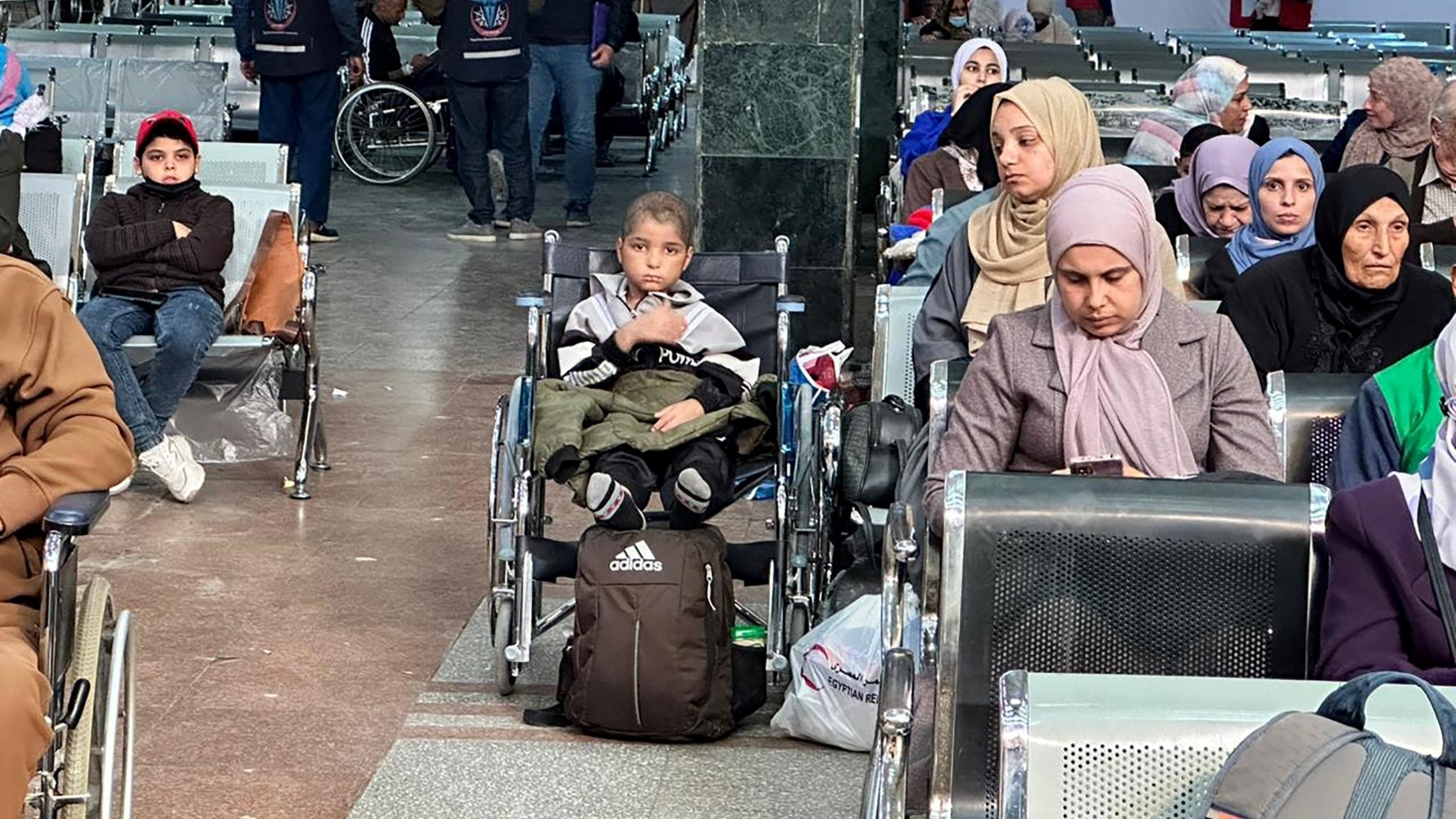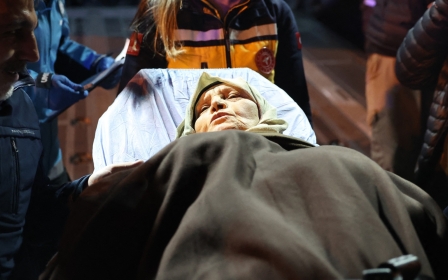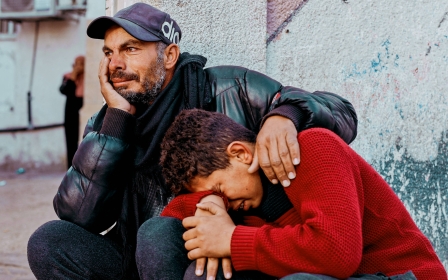War on Gaza: With hospitals destroyed, there is little help for Palestinian cancer patients

Israel’s targeting of Gaza’s hospitals has left its population of around 2.5 million Palestinians without adequate access to healthcare.
Tens of thousands have been wounded in Israeli attacks but those with long-term and terminal illnesses are also left with nowhere to go for treatment.
Cancer patients and others who cannot leave have been left to their fate as the besieged territory’s health facilities shut down.
The Turkish-Palestinian Friendship Hospital, which served as the most important facility for cancer patients in Gaza, halted operations on 30 October because of extensive damage caused by air strikes.
Dr Subhi Skaik, the hospital's director general, announced the closure on Facebook, citing infrastructure damage.
Middle East Eye spoke to one family about their experiences living with cancer while under constant threat from the Israelis.
Intisar Abu Saqer, 49, was diagnosed with cancer two years ago after doctors discovered a tumour on her pancreas.
Around six months after her diagnosis, Saqer underwent a Whipple procedure that is often used to deal with pancreatic tumours.
“Doctors removed five parts from my mother’s body including the head of the pancreas, the top of the stomach, the intestines, gallbladder and bile duct,” Abu Saqer’s daughter, 29-year-old Haneen, explained, speaking on behalf of her now heavily ill mother.
“Her intestines were replaced with artificial conduits,” she added.
Following the successful surgery, Intisar Abu Saqer was left with 12 lymph nodes that were still affected by the cancer.
She subsequently underwent four months of chemotherapy at the Turkish-Palestinian Friendship Hospital, where doctors were able to control its spread.
For a period thereafter, she remained in good health. Following chemotherapy, Intisar adhered to a routine CT screening every three months, to make sure the cancer did not return.
The family dared to feel a sense of optimism until the ongoing conflict began.
Fleeing northern Gaza
Soon after Israel began its bombing of Gaza following the 7 October attack by Hamas-led fighters, Intisar Abu Saqer was forced to flee her home in northern Gaza after it was hit by an Israeli air strike.
At first she took refuge in central Gaza and then made her way to Rafah on the Egyptian border. In neither place was she able to have to her CT screenings.
“We found ourselves constantly on the move,” Haneen recalls. “Each time we settle in a seemingly secure area, it becomes unsafe and we are forced to relocate again.”
After becoming displaced, her mother, Intisar, began feeling pains where she had undergone surgery more than a year and a half earlier.
Doctors initially suggested it could be related to tissue in the affected area healing after the surgery.
“The pain became increasingly severe, my mother could not sleep at all. We sought medical assistance but the doctors could not provide CT screenings,” said Haneen.
“They explained that getting CT scans was unfeasible because of the ongoing chaos,” she added, referring to the conflict.
With the Turkish-Palestinian Friendship Hospital out of action, the family had to keep an ear out for news of where they could get a CT scan.
In January they learned that the European Hospital, as well as the Al-Nasser hospital, which was recently stormed by Israeli soldiers, were performing such scans in southern Gaza.
The family managed to reach the latter and Intisar Abu Saqer was checked.
During the examination, doctors determined that the cancer had returned and spread to other parts of her body, including various lymph nodes, her spine, lungs and pancreas.
Since receiving the news, Intisar’s situation has deteriorated significantly.
"At the moment, my mother's health is rapidly declining. She is now paralysed and unable to walk or even sit down,” said Haneen, adding: “We secured a wheelchair for her just two days ago. We fought to get it for her."
Bribing Egyptian guards
The doctors’ recommendations are for Intisar to leave Gaza and to get treatment abroad but so far her name has not been added to the list of people who can leave the territory through Egypt.
“The process is quite long. Egypt issues a list of patients' names and sends them to Israel for approval,” Haneen explained.
“Once approved, patients can travel to Egypt. There, they know which country will accept them for their treatment. Typically it is Turkey, the UAE, or Jordan, where cancer patients from Gaza are usually hosted.”
Intisar is one of at least 10,000 Palestinians with cancer in Gaza, who are waiting to get out for treatment.
'The doctor informed us that if the cancer had been detected at the start of the aggression, they would have had a chance to control it'
- Haneen Abu Saqer
With each day that passes, the cancer spreads through her body and she slowly loses function of her body.
“The doctor informed us that if the cancer had been detected at the start of the aggression, they would have had a chance to control it,” Haneen said.
“My mum lost over 30 kilograms. She was 78 kilograms and today she is less than 40.
“Her psychological condition has worsened. She looks at herself and laments over the cancer that is eating her alive without any hope of help.”
Haneen has considered bribing Egyptian officials at the border to allow her to leave with her mother but the prices that are being demanded are too high.
“It costs between $5,000 to $10,000 per person to leave Gaza. We cannot afford this.”
Middle East Eye propose une couverture et une analyse indépendantes et incomparables du Moyen-Orient, de l’Afrique du Nord et d’autres régions du monde. Pour en savoir plus sur la reprise de ce contenu et les frais qui s’appliquent, veuillez remplir ce formulaire [en anglais]. Pour en savoir plus sur MEE, cliquez ici [en anglais].





